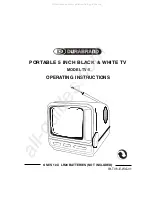
2. Specifications
2
−
4
2.3 Tolerable acceleration/deceleration frequency characteristics
The tolerable acceleration/deceleration frequency characteristics of the controller fluctuate according
to the motor speed and motor shaft conversion GD
2
, so calculate the tolerable frequency with the
following items. The smaller of the frequency determined by the acceleration/deceleration time
according to the controller output (refer to appendix) and the frequency determined by the
regenerative resistor becomes the operable frequency (tolerable duty cycle).
2.3.1 Frequency according to acceleration/deceleration time (tolerable duty cycle)
When machining with a frequent spindle acceleration/deceleration, the average output value per cycle
must not exceed the continuous rated output.
Continuous rated output
≥
1 cycle average output value
(1) How to obtain the average output
Average output P
AV
=
P
1
2
•
t
1
+ P
2
2
•
t
2
+ P
3
2
•
t
3
T
2.3.2 Frequency according to regenerative resistor (tolerable duty cycle)
The energy during motor deceleration (during regeneration) is consumed by the regenerative resistor.
This heating value of this regenerative resistor changes according to the motor type, speed being used,
load inertia and continuous repetition cycle (duty cycle).
Use a regenerative resistor with an adequate capacity according to the load and continuous cycle time.
(1) How to obtain the regenerative resistor capacity
Obtain the rotation energy with the following equation, and select so that the value does not
exceed the capacity of the regenerative resistor.
Regenerative resistor capacity
≥
Motor rotation energy
Refer to section 2.3.3 for the regenerative resistor capacity.
P
1
, P
3
: Output (kW) during acceleration/
deceleration
30 minute rated output
×
1.2
P
2
: Output (kW) during cutting
t
1
, t
3
: Acceleration/deceleration time
Motor speed
Motor output
Accel-
eration
Cutting
Decel-
eration
1 cycle T
P
1
P
3
P
1
P2
t
1
t
2
t
3
















































